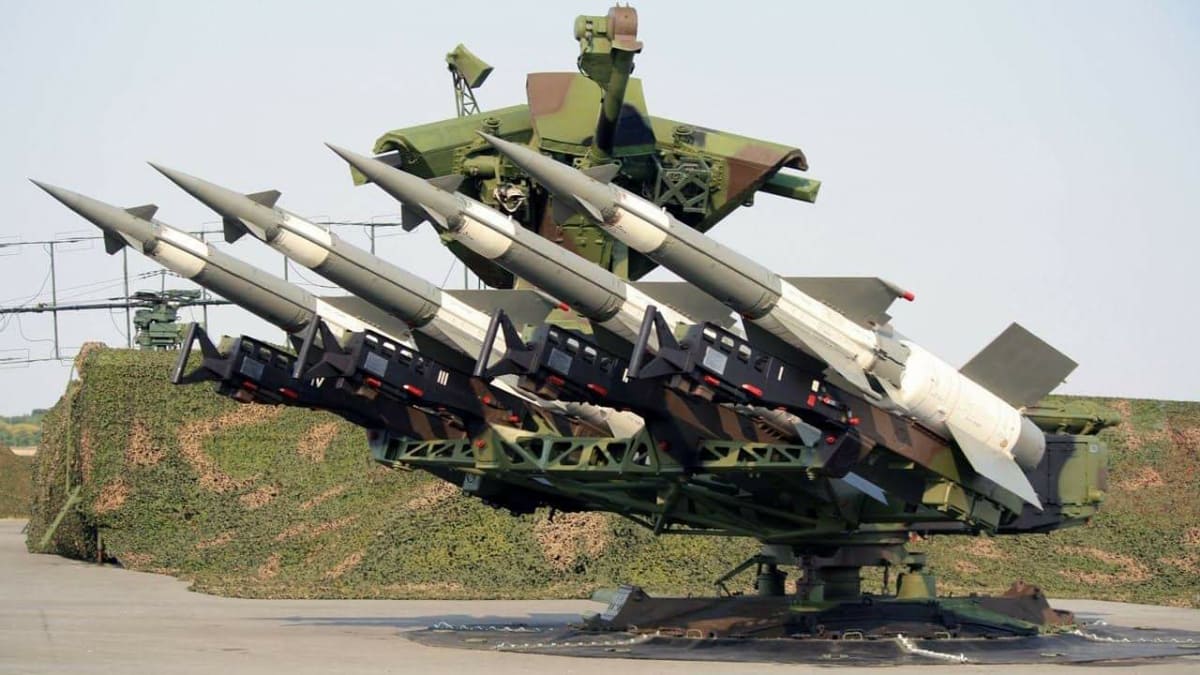Ukraine is likely to use Soviet-era S-125 Pechora/Neva surface-to-air missiles (SAM) for land attacks and anti-ship roles if a picture and accompanying information on Russian and Ukrainian social media networks is anything to go by.
15 Times The Speed Of Sound, Fighter Pilots Share Chilling Details Of UFO Sightings That Defied Law Of Physics
ICE-LAND! Russia’s Gigantic Il-76 Aircraft Makes 1st Landing On Antarctic Ice Airfield After Flying 5300 Km – Watch
The S-125 is a two-stage, solid-fuel, low-to-medium altitude SAM designed to shoot down bombers, fighter bombers, and cruise missiles.
The Pechora is one of the most famous and popular SAM systems, which rose to prominence after it shot down a US F-117A Nighthawk, the world’s first stealth aircraft, during the 1999 NATO invasion of Yugoslavia.
According to Ukrainian sources, several old S-125 air defense systems from storage were commissioned in September as part of the anti-ship coastal defense system.
S-125 "Pechora" air defense system somewhere on the Black Sea coast
Ukraine is armed with 2 divisions (8 launchers) pic.twitter.com/wbhTItfnuo
— NOELREPORTS 🇪🇺 🇺🇦 (@NOELreports) November 10, 2022
Can The S-125 Be Used For Anti-Ship & Land Attack Roles?
Experts believe the S-125 to be a highly capable missile, which can be tweaked for surface-to-surface strikes and as an anti-ship (AShM) missile.
“The Pechora, despite its vintage, is still a deadly weapon system. The Ukrainians had upgraded them from valve to digital about a decade ago,” said former IAF fighter pilot Rajiv Tyagi. Tyagi is presently a software, technology, and defense industry professional, involved with air defense (AD) systems.
A tweet on August 20 showed Ukrainian military technicians assembling and preparing the missile, with the accompanying message saying it was part of an effort to “increase their missile production (to) 600%.” The Twitter thread had comments saying Ukraine retained a significant stock of these missiles after the United Soviet Socialists Republics (USSR) dissolution.
Talking about the Pechora/Newa’s reported repurposing, Tyagi said, “anti-ship is certainly possible,” but he wasn’t sure how one might use it to hit land targets. This can be possible because anti-ship and air defense missiles have similar seekers like radio frequency (RF), infrared (IR), and radar seekers.
Aircraft and warships have engines, radars, and communication systems that emanate heat and radio waves that these seekers lock on to. Tyagi said it is possible to change the head to an RF seeker for land targets like air defense radar stations.

Land attack/air-to-ground missiles also have other systems like a CCD camera, electro-optics (EO), terrain mapping, and according to Tyagi, usually satellite navigation/GPS guidance and image referencing to track and identify targets.
However, the claim remains a social media post, and it could not be confirmed if the S-125s were being repurposed for anti-ship and land-attack roles. A tweet on November 10 by @Noelreports posted two photographs of the S-125 Pechora mounted on a truck, saying they were “somewhere on the Black Sea coast.”
This somewhere lends credence to the claim as Ukraine can use them to hit Russian Navy ships firing Kalibr cruise missiles into Ukraine. “Ukraine is armed with two divisions (8 launchers),” the tweet said.
Retired Canberra and MiG-25 pilot Group Captain Johnson Chacko called the Pechora a “potent weapon in the hands of a well-trained crew. It has a limited range, but if there are ships within that range, they can be targeted,” he added.
Stealth Killer S-125
The US Air Force F-117A Nighthawk, piloted by Lieutenant Colonel Darrell Patrick ‘Dale’ Zelko, was shot down by Yugoslav forces on March 27, 1999.
Zelko, who ejected from the aircraft, was rescued in a tense operation, hiding in a drain while minutes away from being captured.
The Yugoslav version of the S-125 Neva (NATO reporting name SA-3 Goa) was fired by the 250th Air Defense Missile Brigade of the Army of Yugoslavia under the command of then Lt Col Zoltan Dani.
Dani later revealed how he shot down the Nighthawk in an interview with the Associated Press (AP) in October 2005, saying his primary fear was the US High-Anti Radiation Missile (HARM) used for Suppression of Enemy Air Defenses (SEAD) operations.
This forced him to use human spotters and landlines for communication, constantly change locations and not switch on his radars for more than a few minutes.
Refusing to divulge the exact nature of the changes the Yugoslavs made to the 1960s missile’s warhead and guidance system, Zoltan said he had begun to study stealth technology much before the war.
“I concluded there are no invisible aircraft, but only less visible,” he said. “Despite NATO’s near-total air supremacy, the alliance never succeeded in knocking out Dani’s batteries,” the report from USA Today noted.
In early April, a Russian Sukhoi Su-35 was shot down near Kharkiv, with many social media comments crediting the S-125 for the success. The system’s only drawback is its lack of mobility, which Chacko explains is “transportable only after dismantling.”
EurAsian Times had mentioned in an earlier report how the missiles were upgraded to the S-125-2D Pechora standard, which increased their range to 40 kilometers.
- The author can be reached at satamp@gmail.com
- Follow EurAsian Times on Google News